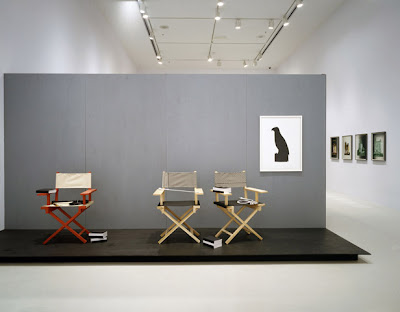Laura MulveyLaura Mulvey was born in Oxford on 15 August 1941. After studying history at St. Hilda's, Oxford University, she came to prominence in the early 1970s as a film theorist, writing for periodicals such as Spare Rib and Seven Days. Much of her early critical work investigated questions of spectatorial identification and its relationship to the male gaze, and her writings, particularly the 1975 essay Visual Pleasure and Narrative Cinema, helped establish feminist film theory as a legitimate field of study.
Between 1974 and 1982 Mulvey co-wrote and co-directed with her husband, Peter Wollen, six projects: theoretical films, dealing in the discourse of feminist theory, semiotics, psychoanalysis and leftist politics. These include: Penthesilea: Queen of the Amazons (1974), Riddles of the Sphinx (1977), AMY! (1980), Crystal Gazing (1982), Frida Kahlo and Tina Modotti (1982) and The Bad Sister (1982). After these, Mulvey did not return to film-making until 1991 when production began on her solo project Disgraced Monuments, an examination of the fate of revolutionary monuments in the Soviet Union after the fall of communism.
Mulvey is best known for her essay, "Visual Pleasure and Narrative Cinema", written in 1973 and published in 1975 in the influential British film theory journal Screen. It later appeared in a collection of her essays entitled Visual and Other Pleasures, and numerous other anthologies. Her article was one of the first major essays that helped shift the orientation of film theory towards a psychoanalytic framework, influenced by the theories of Sigmund Freud and Jacques Lacan. Prior to Mulvey, film theorists such as Jean-Louis Baudry and Christian Metz had attempted to use psychoanalytic ideas in their theoretical accounts of the cinema, but Mulvey's contribution was to inaugurate the intersection of film theory, psychoanalysis, and feminism.
Laura Mulvey is the Mary Cornille Distinguished Visiting Professor in the Humanities at Wellesley College. She is currently professor of film and media studies at Birkbeck, University of London.
Zoe BeloffZoe Beloff grew up in Edinburgh, Scotland. In 1980 she moved to New York to study at Columbia University where she received an MFA in Film. Her work has been featured in international exhibitions and screenings; venues include the Whitney Museum of American Art and the Museum of Modern Art in New York, the Freud Dream Museum in St. Petersburg, and the Pompidou Center in Paris. In 2009 she participated in the Athens Biennale, and has an upcoming project with MuHKA Museum in Antwerp. Her most recently completed work is the exhibition “The Coney Island Amateur Psychoanalytic Society and their Circle. She has been working with the Christine Burgin Gallery on a number of artist projects that include books and prints.
Zoe works with a wide range of media including film, stereoscopic projection performance, interactive media, installation and drawing.Her artistic interest lies in finding ways to graphically manifest the unconscious processes of the mind. She considers herself a medium, an interface between the living and the dead, the real and the imaginary. Sometimes she uses archaic apparatuses, sometimes, new analog/digital hybrids. Each project aims to connect the present with the past, to create new visual languages where modern media will once again be invested with the uncanny. She has collaborated with artists from other disciplines including composer John Cale, the Wooster Group Theater Company and composer, singer and performance artist Shelley Hirsch.
Zoe has been awarded fellowships from Guggenheim Foundation (2003), The Foundation for Contemporary Performance Arts (1997) and NYFA (1997, 2001). She has received individual artist grants from foundations that include NYSCA, The Jerome Foundation and Experimental Television Center Finishing Funds Award. She has had residences at Harvestworks Digital Media Arts, Hallwalls in Buffalo and Tesla in Berlin.
Some links:
Dream Life of Technology was first published in a French cinema journal called "Trafic" in 1997 it was written to accompany my CD-ROM "Beyond".
"Beyond" is now online and can be accessed here:
http://www.zoebeloff.com/beyond/
"Staging the Unconscious" was also published in "Trafic" in 2008. A web version of the Somnambulists is online - the actual project is a gallery installation.
http://www.zoebeloff.com/somnambulistsWeb/
Check out the NyTimes review/slideshow of Amateur Psychoanalytic Society



























